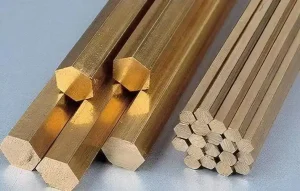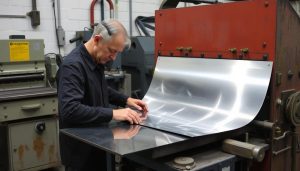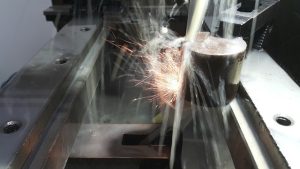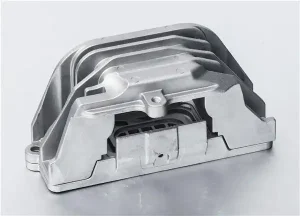Discover the power and precision of the TIG welding process. Also known as tungsten inert gas welding, this versatile technique is widely used across various industries, from aerospace to medical devices. In this comprehensive guide, we’ll explore the fundamentals of TIG welding, its key benefits, best practices, and a wide range of applications that showcase its versatility.
What is TIG Welding?
Tungsten Inert Gas (TIG) welding is a precise and versatile arc welding process that utilizes a non-consumable tungsten electrode to produce an electric arc. Unlike traditional welding techniques, TIG welding relies on inert gas shielding to protect the weld pool from atmospheric contamination, ensuring high-quality, clean joints.
The Role of the Tungsten Electrode
The tungsten electrode plays a crucial role in the TIG welding process. Its primary function is to conduct the electric current and establish the arc, which melts the base metal and filler material (if used) to create the weld. The tungsten electrode is designed to withstand the intense heat of the arc, ensuring consistent and reliable performance throughout the welding operation.
How TIG Welding Creates Strong Joints
The TIG welding process creates strong, high-quality joints through a combination of precise control and the use of inert gas shielding. The electric arc generated between the tungsten electrode and the base metal melts the surfaces, allowing them to fuse together. The inert gas, such as argon or helium, shields the weld pool from atmospheric contaminants, preventing impurities and ensuring a clean, strong weld. This attention to detail and control makes TIG welding an ideal choice for applications requiring exceptional joint strength and aesthetics.
| Characteristic | TIG Welding |
|---|---|
| Electrode Type | Non-consumable tungsten |
| Shielding Gas | Inert gas (argon, helium, or a mixture) |
| Weld Quality | High-quality, clean, and precise |
| Ideal for | Thin materials, complex geometries, and applications requiring high-quality welds |
“The tungsten electrode is the heart of the TIG welding process, delivering the precise control and clean results that make this technique so valuable.”
Benefits of TIG Welding
When it comes to precision welding, the TIG (Tungsten Inert Gas) technique stands out for its exceptional capabilities. This versatile process offers numerous advantages that make it a preferred choice for a wide range of applications, particularly where high-quality welds and clean joints are critical.
High-Quality Welds and Precision
One of the primary benefits of TIG welding is its ability to produce precision welding with remarkable accuracy. The controlled heat input and the skilled manipulation of the tungsten electrode allow welders to create clean welds with minimal distortion and a smooth, uniform appearance. This level of precision is essential in industries like aerospace, medical devices, and automotive manufacturing, where the integrity and aesthetics of the final product are paramount.
Ideal for Thin Materials and Clean Joints
TIG welding shines when it comes to thin material welding, where the controlled heat input and precise control over the weld pool are crucial. The TIG process allows for welding of thin materials, such as stainless steel, aluminum, and titanium, without the risk of burning through or distorting the workpiece. Additionally, the inert gas shielding ensures that the welds are clean, free from spatter or slag, resulting in a professional, high-quality finish.
| Feature | Benefit |
|---|---|
| Precision welding | Exceptional accuracy and minimal distortion |
| Clean welds | Smooth, uniform appearance with no spatter or slag |
| Thin material welding | Ability to weld delicate and sensitive materials without damage |

“TIG welding is the gold standard for precision and clean joints, making it the preferred choice for industries that demand the highest quality and attention to detail.”
TIG Welding Techniques and Best Practices
Mastering the art of TIG (Tungsten Inert Gas) welding requires a deep understanding of proper techniques and best practices. This section delves into the essential skills needed to achieve exceptional TIG welding results, from electrode preparation and grinding to controlling heat input for precision.
Electrode Preparation and Grinding
The key to consistent, high-quality TIG welds lies in the proper preparation and maintenance of the tungsten electrode. Carefully grinding the electrode to the correct shape and angle is crucial for ensuring a stable arc and consistent weld bead. Regular inspection and resharpening of the electrode can help maintain the desired characteristics and optimize the TIG welding process.
Controlling Heat Input for Precision
One of the hallmarks of TIG welding is its ability to deliver precise heat control, allowing for delicate, intricate welds. By carefully managing the heat input, welders can achieve a range of penetration depths, ideal for working with thin materials and creating clean, visually appealing joints. Mastering heat control techniques, such as adjusting the amperage and shielding gas flow, is essential for producing flawless TIG welds.
| TIG Welding Technique | Description | Benefits |
|---|---|---|
| Electrode Preparation | Proper grinding and shaping of the tungsten electrode | Ensures a stable arc, consistent weld bead, and optimized TIG welding process |
| Heat Control | Precise adjustment of amperage and shielding gas flow | Allows for delicate, intricate welds and ideal penetration depth on thin materials |
“Mastering TIG welding techniques is the key to unlocking the full potential of this versatile and high-quality joining process.”
Common Applications of TIG Welding
The versatility of TIG (Tungsten Inert Gas) welding makes it a preferred choice across diverse industries. From the intricate components of aerospace and aviation to the sleek designs of automotive and motorcycle manufacturing, as well as the critical fabrication of medical devices, this precise welding technique has become an essential tool in various manufacturing processes.
Aerospace and Aviation
In the aerospace and aviation sectors, TIG welding is widely used for its ability to create high-quality, durable joints. Aerospace welding demands exceptional precision, and TIG welding delivers, allowing manufacturers to assemble complex airframe structures, engine components, and other mission-critical parts with unparalleled accuracy.
Automotive and Motorcycle Manufacturing
The automotive and motorcycle industries have long leveraged the benefits of automotive welding techniques like TIG. This process is integral to the fabrication of exhaust systems, suspension components, and other critical structural elements, ensuring the safety and reliability of these vehicles.
Medical Devices and Food Processing
In the medical device and food processing industries, cleanliness and sanitation are paramount. TIG welding excels in medical device fabrication, enabling the creation of seamless, corrosion-resistant joints in surgical tools, implants, and food-processing equipment, where contamination must be strictly avoided.
“TIG welding’s precision and versatility make it an indispensable tool in a wide range of industries, from the skies to the open road and beyond.”

Why Choose Shixinproto for TIG Welding Services?
Shixinproto is the premier destination for professional TIG welding services and custom metal fabrication. Our team of skilled welders and state-of-the-art equipment ensure exceptional results for clients across a wide range of industries. With years of experience and a commitment to quality assurance, we deliver flawless welds and precision-crafted metal components that meet the highest standards.
At Shixinproto, we understand the importance of attention to detail and consistent quality in TIG welding. Our welders are expertly trained in advanced techniques, ensuring a level of craftsmanship that sets us apart. From delicate medical devices to rugged automotive parts, we handle a diverse array of projects with the utmost care and precision.
Choosing Shixinproto means entrusting your project to a reliable partner dedicated to exceeding your expectations. Whether you require complex fabrication or precise welding for your business, our team is equipped with the expertise and resources to deliver exceptional results. Experience the difference that industry-leading TIG welding services and a commitment to quality assurance can make for your next project.
FAQ
What is the TIG welding process?
What is the role of the tungsten electrode in TIG welding?
How does TIG welding create strong, high-quality joints?
What are the benefits of TIG welding?
- Exceptional precision and control for high-quality welds
- Ideal for welding thin materials and creating clean, spatter-free joints
- Produces welds with excellent mechanical properties and a clean, consistent appearance
How do I prepare the tungsten electrode for TIG welding?
How can I control the heat input in TIG welding for precision?
What are some common applications of TIG welding?
- Aerospace and aviation: for manufacturing and repairing aircraft components
- Automotive and motorcycle manufacturing: for high-quality, clean welds on thin, lightweight materials
- Medical device fabrication: for producing specialized, precision-engineered medical equipment
- Food processing equipment: for creating sanitary, corrosion-resistant welds





